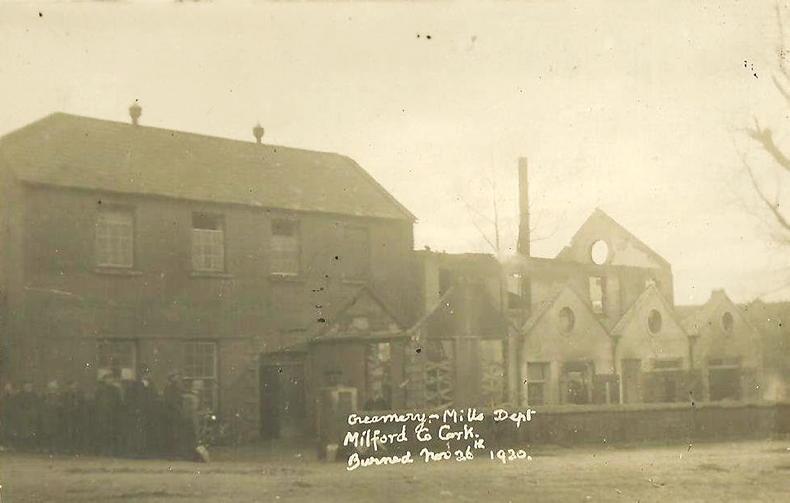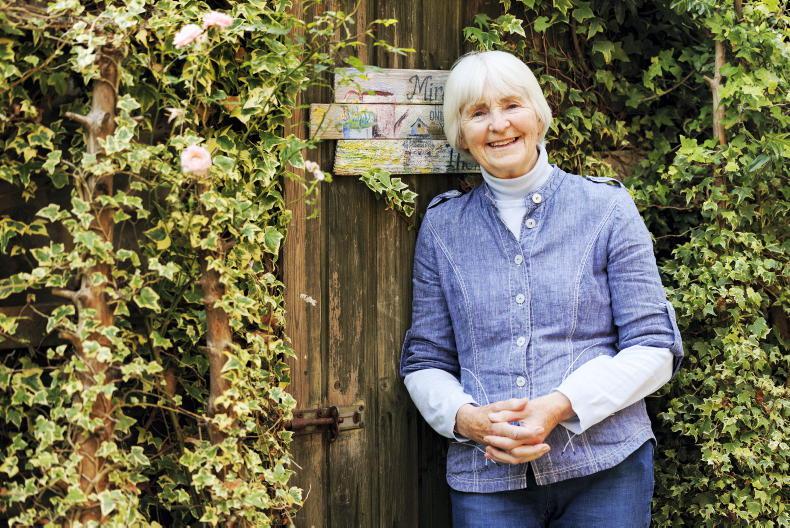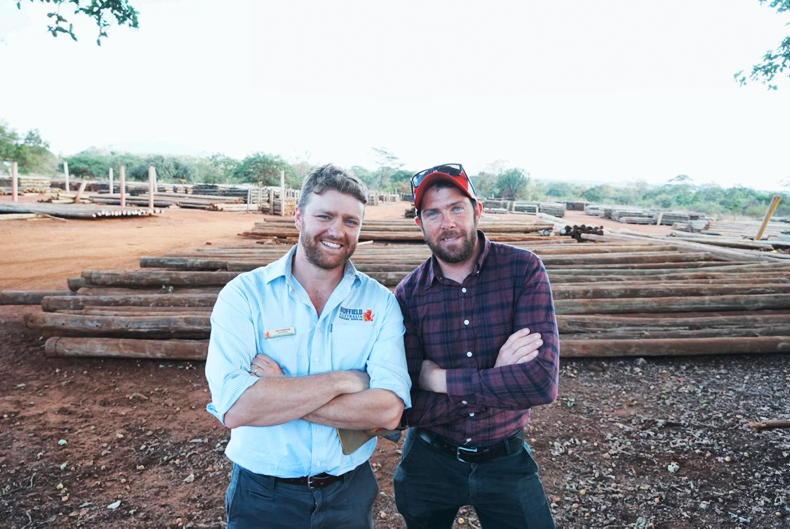When considering the events that took place during the Irish War of Independence urban areas such as Dublin, Cork, Galway, Belfast and Limerick come to mind. However, British Crown Forces waged a parallel campaign against the Irish farming community from the get-go.
This was due in part to many Irish Republican Army (IRA) members being from the farming community and it was often in the countryside the Crown Forces sought their revenge.
The callous execution of farmers Willy Walsh, Michael Hoade, and James Kirwan, 22 January 1921 for their involvement in an ambush at Gallagh, Co Galway, is but one example. The destruction of farm machinery, creameries and co-operatives and burning of farmhouses, barns and haggards was the lesser price paid.
The guerrilla war in rural Ireland was waged mainly by farmers between the hedgerows and from the hillsides. The idea was simple, draw out the enemy to the area you know best, take full advantage of the surroundings, ambush them and when finished, disappear. This was the main reason Flying Columns flourished and quickly became a thorn in the side of Crown Forces.
Co-op chaos
Reprisals on the farming community became common in the 1920s with disruption and destruction of creameries and co-operatives. The co-operatives and the formation of creameries had grown from the Irish Agricultural Organisation established in 1894 led by Sir Horace Plunkett.
Its main objective was to modernise and secure the future of Irish farming, a remarkable ambition considering the near extinction of rural Ireland during the Famine years. By 1920 the co-operatives had established rural banks, and made available agricultural supplies and machinery at a fair price. They were totally owned by the farmers with “one man one vote” being their mantra. Needless to say, the socio-economic existence of rural Ireland was intertwined with these organisations and when they became targets for Crown Forces there were serious consequences for surrounding communities.
Harbouring IRA
The local Royal Irish Constabulary (RIC) and intelligence officers in the Auxiliaries believed that co-operatives and creameries provided opportunity for meetings of IRA battalions as well as storage and distribution of weapons. This was not an unreasonable assumption as nearly every parish in Ireland had an IRA battalion and many members were farmers.
Attacks on creameries began in 1920. In Templemore, County Tipperary on 16 August RIC District Inspector William H Wilson was ambushed and shot dead by an IRA gunman. Later that night a mix of Crown Forces went on a rampage of destruction, destroying shops, houses and the Town Hall. They then continued out into the countryside and destroyed the creameries at Loughmore, Castleinley and Killea.
Another such attack in Tubbercurry, was a devastating example. On 30 September 1920 RIC Detective Inspector James Brady was killed in an IRA ambush at Chaffpool. As a result, later that night several lorries of Auxiliaries, Black and Tans, and RIC attacked Tubbercurry. A carnival of terror was unleashed resulting in the burning of 14 houses, several local businesses and a creamery on the outskirts of town which was managed by Sinn Féin councillor Thomas Murricane. From there some of the raiding party headed four miles north of the town to the local Achonry co-operative and within minutes it was ablaze.
It’s believed the manager Patrick Condon and several farmers from the area attempted to put out the raging inferno but were pushed back at gunpoint by the rest of the raiding party who had just arrived. It’s estimated that over £20,000 worth of damage was caused to the local dairy industry resulting in roughly 1,500 farming families being left without an income.
In Donegal on 8 November 1920, as a result of the burning of the RIC Barracks at Doony, Milford creamery was attacked by several members of the Crown Forces. Fortunately, Paddy Sheehan who was the boiler man managed to raise the alarm, the church bell was rung and locals ran to the scene.
They managed to put the fire out and restrict the damage. However, on the night of 26 November, Crown Forces returned and the creamery and mill were completely knocked out of production with the complete destruction of the mill which was right beside the Creamery.
Swelling the ranks
While the Conservative government tried to justify these attacks, it was the opinion of the Labour Party that they were only encouraging more into the ranks of the IRA. Nevertheless, regular attacks were carried out in the Golden Vale region, Kerry, Limerick, Tipperary and Cork while Sligo, Donegal, Roscommon and Cavan were among other areas targeted.
Rural Ireland gave greatly to the War of Independence and would go on to play a vital role in shaping the state. Many of the creameries and co-operatives that were attacked are still operational today, which is a fitting tribute to those who fought and died in the Battle of the Hedgerows.
Read more
The Hogans: brothers in farming, freedom, religion and GAA history
Sport today and sport in history both to be celebrated here
When considering the events that took place during the Irish War of Independence urban areas such as Dublin, Cork, Galway, Belfast and Limerick come to mind. However, British Crown Forces waged a parallel campaign against the Irish farming community from the get-go.
This was due in part to many Irish Republican Army (IRA) members being from the farming community and it was often in the countryside the Crown Forces sought their revenge.
The callous execution of farmers Willy Walsh, Michael Hoade, and James Kirwan, 22 January 1921 for their involvement in an ambush at Gallagh, Co Galway, is but one example. The destruction of farm machinery, creameries and co-operatives and burning of farmhouses, barns and haggards was the lesser price paid.
The guerrilla war in rural Ireland was waged mainly by farmers between the hedgerows and from the hillsides. The idea was simple, draw out the enemy to the area you know best, take full advantage of the surroundings, ambush them and when finished, disappear. This was the main reason Flying Columns flourished and quickly became a thorn in the side of Crown Forces.
Co-op chaos
Reprisals on the farming community became common in the 1920s with disruption and destruction of creameries and co-operatives. The co-operatives and the formation of creameries had grown from the Irish Agricultural Organisation established in 1894 led by Sir Horace Plunkett.
Its main objective was to modernise and secure the future of Irish farming, a remarkable ambition considering the near extinction of rural Ireland during the Famine years. By 1920 the co-operatives had established rural banks, and made available agricultural supplies and machinery at a fair price. They were totally owned by the farmers with “one man one vote” being their mantra. Needless to say, the socio-economic existence of rural Ireland was intertwined with these organisations and when they became targets for Crown Forces there were serious consequences for surrounding communities.
Harbouring IRA
The local Royal Irish Constabulary (RIC) and intelligence officers in the Auxiliaries believed that co-operatives and creameries provided opportunity for meetings of IRA battalions as well as storage and distribution of weapons. This was not an unreasonable assumption as nearly every parish in Ireland had an IRA battalion and many members were farmers.
Attacks on creameries began in 1920. In Templemore, County Tipperary on 16 August RIC District Inspector William H Wilson was ambushed and shot dead by an IRA gunman. Later that night a mix of Crown Forces went on a rampage of destruction, destroying shops, houses and the Town Hall. They then continued out into the countryside and destroyed the creameries at Loughmore, Castleinley and Killea.
Another such attack in Tubbercurry, was a devastating example. On 30 September 1920 RIC Detective Inspector James Brady was killed in an IRA ambush at Chaffpool. As a result, later that night several lorries of Auxiliaries, Black and Tans, and RIC attacked Tubbercurry. A carnival of terror was unleashed resulting in the burning of 14 houses, several local businesses and a creamery on the outskirts of town which was managed by Sinn Féin councillor Thomas Murricane. From there some of the raiding party headed four miles north of the town to the local Achonry co-operative and within minutes it was ablaze.
It’s believed the manager Patrick Condon and several farmers from the area attempted to put out the raging inferno but were pushed back at gunpoint by the rest of the raiding party who had just arrived. It’s estimated that over £20,000 worth of damage was caused to the local dairy industry resulting in roughly 1,500 farming families being left without an income.
In Donegal on 8 November 1920, as a result of the burning of the RIC Barracks at Doony, Milford creamery was attacked by several members of the Crown Forces. Fortunately, Paddy Sheehan who was the boiler man managed to raise the alarm, the church bell was rung and locals ran to the scene.
They managed to put the fire out and restrict the damage. However, on the night of 26 November, Crown Forces returned and the creamery and mill were completely knocked out of production with the complete destruction of the mill which was right beside the Creamery.
Swelling the ranks
While the Conservative government tried to justify these attacks, it was the opinion of the Labour Party that they were only encouraging more into the ranks of the IRA. Nevertheless, regular attacks were carried out in the Golden Vale region, Kerry, Limerick, Tipperary and Cork while Sligo, Donegal, Roscommon and Cavan were among other areas targeted.
Rural Ireland gave greatly to the War of Independence and would go on to play a vital role in shaping the state. Many of the creameries and co-operatives that were attacked are still operational today, which is a fitting tribute to those who fought and died in the Battle of the Hedgerows.
Read more
The Hogans: brothers in farming, freedom, religion and GAA history
Sport today and sport in history both to be celebrated here









SHARING OPTIONS